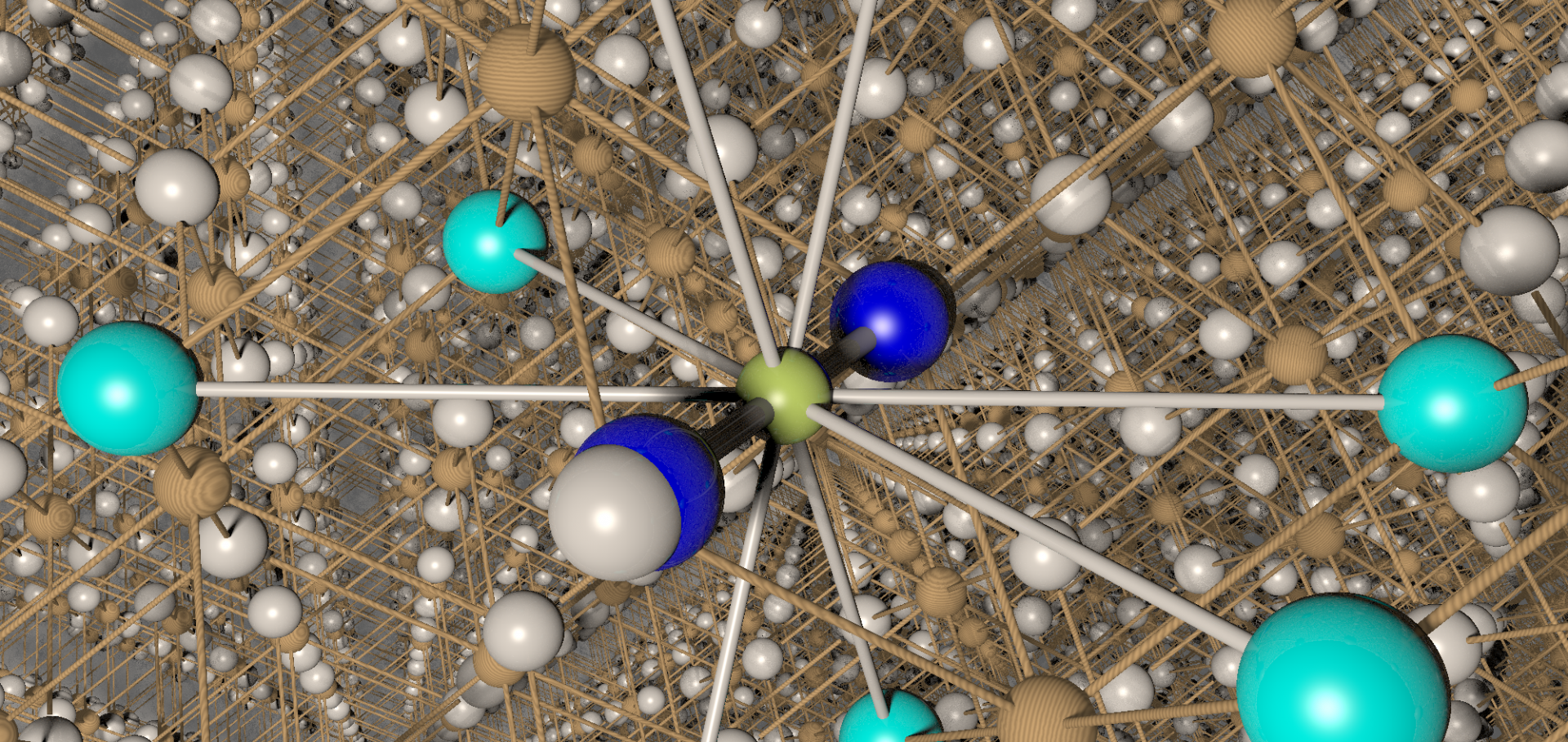Magnetism in organic radical ion salts based on imidazolyl and benzimidazolyl nitronyl nitroxide
J PHYS IV 114 (2004) 651-653
Abstract:
Radical ion salts of the neutral organic radicals, 2-imidazolyl nitronyl nitroxide (2-IMNN) and 2-benz-imidazolyl nitronyl nitroxide (2-BIMNN), and a diradical cation salt of pyridine-2,6-diylbis(nitronyl nitroxide) (2,6-PYBNN), were prepared. The radical ion salts of 2-BIMNN, Li+(2-BIMNN)(.-) and (2-BIMNN).-BF4-, exhibit strong antiferromagnetic interactions with exchange coupling constants J/k = -42 K and -510 K, respectively, while the 2-IMNN salts show Curie-Weiss behaviour with Weiss constants theta = -9.0 K for Li+(2-IMNN)(.-) and theta = -1.8 K for (2-IMNN)Cl-.-(-), indicating weak interactions. The diradical cation salt (2,6-PYBNN)Cl-..+(-) 14 shows intramolecular ferromagnetic interaction with J/k = +4.7 K and intermolecular antiferromagnetic interaction with theta = -0.7 K, which is remarkably reduced from J/k = -57 K observed in the diradical 2,6-PYBNN.Millimetre-wave and magnetic studies on a high-spin molecule, Cr-10(OMe)(20)(O2CCMe3)(10)
J PHYS IV 114 (2004) 645-647
Abstract:
We report millimetre-wave and magnetic measurements on single crystals of the high-spin molecular magnet, Cr-10(OMe)(20)(O2CCMe3)(10). The susceptibility data obtained using a SQUID magnetometer indicate that this molecule has a total spin of S = 15. The temperature dependence of the magnetisation allows us to estimate the intermolecular exchange constant. The EPR spectra were obtained at different frequencies, angles and temperatures. The results are compared with numerical simulations allowing determination of the Hamiltonian parameters.Two hybrid organometallic-inorganic layered magnets from the series [Z(III)CP*(2)] [(MMIII)-M-II (ox)(3)] studied with mu(+) SR
J PHYS IV 114 (2004) 629-631
Abstract:
We present zero-field muon spin relaxation (ZF-mu(+)SR) measurements on two examples of a new series of hybrid organometallic-inorganic layered magnets, namely ferromagnetic [FeCp2*][MnCr(ox)(3)] and ferrimagnetic [CoCp2*][FeFe(ox)(3)] (where ox = oxalate and Cp-* = pentame- thyl-cyclopentadienyl). Both materials show multi-component muon spin precession signals characteristic of quasistatic magnetic fields at several distinct muon sites. The temperature dependence of the precession frequencies allow critical exponents to be extracted. Possible muon sites are discussed on the basis of dipole field calculations.A μSR study of the spin-crossover
Journal of Physics and Chemistry of Solids 65:1 (2004) 25-28
Abstract:
The spin-crossover phenomenon is a cooperative low-spin to high-spin transition which can be initiated using temperature or light-irradiation. We have used muon-spin relaxation (μSR) to study this effect in Fe(PM-PEA)A μSR study of the spin-crossover
JOURNAL OF PHYSICS AND CHEMISTRY OF SOLIDS 65:1 (2004) 25-28


